Tate Britain Millbank renovation by Caruso St John completed
Architecture firm Caruso St John has completed a £45 million renovation of London's Tate Britain art gallery, which includes a spiral staircase descending to new underground classrooms.
Following the opening of ten new exhibition spaces at the gallery earlier this year, Caruso St John has overhauled the oldest parts of Tate Britain's Millbank building to create new education and events rooms in spaces that were previously inaccessible to the public.
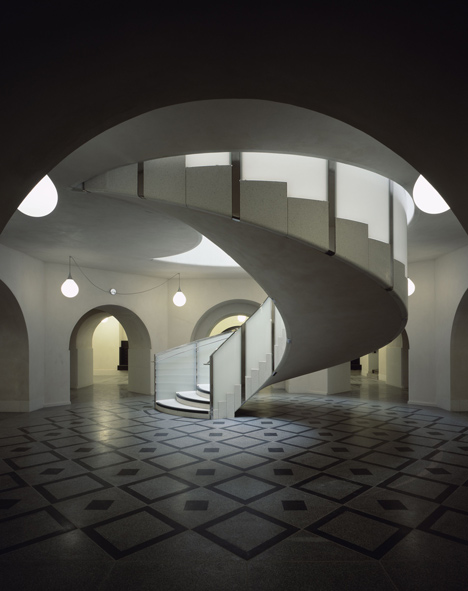
The new staircase spirals down from the centre of the domed rotunda, where a surface of monochrome terrazzo recalls the patterned mosaics of the original marble floor. As well as leading to new classrooms, it brings visitors down to the new Djanogly Cafe and renovated Rex Whistler restaurant, which features the restored 1920s mural The Expedition in Pursuit of Rare Meats.
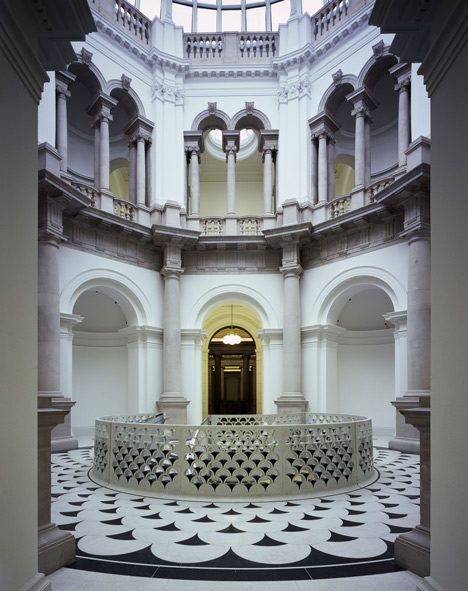
A circular balcony around the rotunda had been closed since the 1920s, but has now been revamped to create a first-floor cafe and members lounge with a 14 metre-long bar.
Elsewhere on this floor, the architects removed partitions to reopen the interior of the Grand Saloon. An original Victorian ceiling has been restored and clustered pendant lights were added, creating a large space that can be used for events.
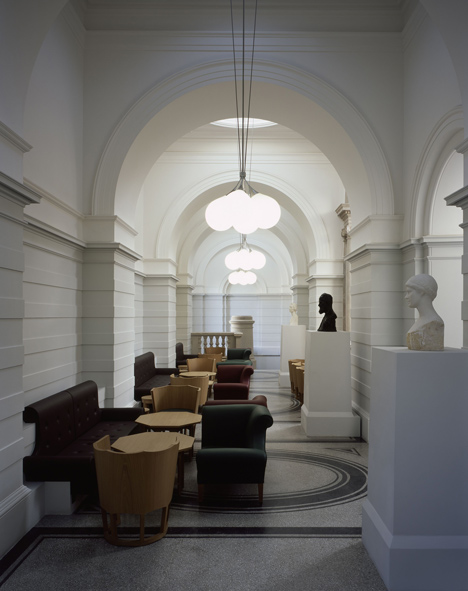
The project also included the reopening of the building's Thame-side entrance and the addition of a new dedicated entrance for school groups.
"The new Tate Britain opens up the Millbank entrance to reassert and enhance the original grandeur and logic of the galleries," said Tate Britain director Penelope Curtis. "Adam Caruso and Peter St John have created new spaces out of old and artists have helped to articulate a new sense of the public realm," she added.
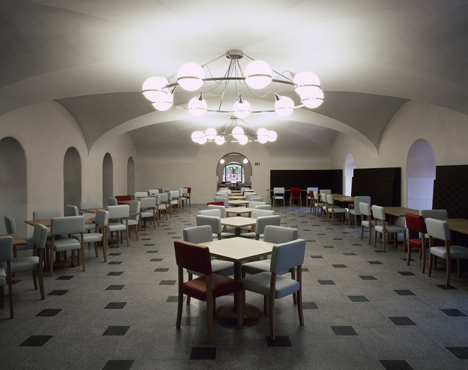
Tate Britain first opened in 1897 as the Tate Gallery, showing a small collection of British art. Since then it has expanded to encompass four UK sites and over 70,000 artworks.
To commemorate the opening year, Caruso St John furnished the new gallery spaces with tables, chairs and benches by designers active during the British Arts and Crafts movement.

Photography is by Hélène Binet.
Here's more information from Tate Britain:
The new Tate Britain is unveiled
The new Tate Britain is unveiled to the public on 19 November 2013. The transformation of the oldest part of the Grade II* Millbank building by leading architects Caruso St John marks a significant moment for Tate Britain. The unveiling follows the opening in May 2013 of ten new galleries and new BP Displays, including the chronological presentation of Tate’s unparalleled collection of British art.
The new Tate Britain is being made possible with the support of The Manton Foundation; Heritage Lottery Fund; The Gatsby Charitable Foundation; Ronald and Rita McAulay; The Linbury Trust and The Monument Trust; Garfield Weston Foundation; Clore Duffield Foundation; The Taylor Family Foundation; The Porter Foundation; Sir Harry and Lady Djanogly; The Dr Mortimer and Theresa Sackler Foundation; The Wolfson Foundation; Tate Members and other individual donors.
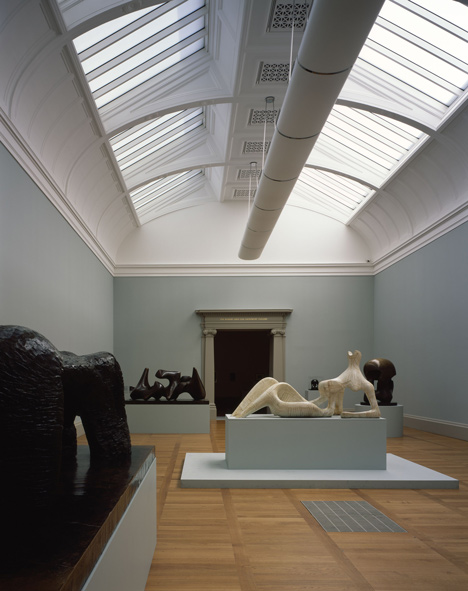
The £45 million project includes:
» the reopening of the main entrance to Tate Britain on Millbank, combining new architectural features with the excavation of the most beautiful original architectural elements of the building. The changes restore the historical logic of the building and include a striking new spiral staircase inside the entrance opening up access to new public spaces below;
» the reopening of The Rex Whistler Restaurant, with its famous Rex Whistler mural, The Expedition in Pursuit of Rare Meats 1926-7, fully restored; and the new Djanogly Café, opposite the restaurant, which opens onto an exterior terrace. Both serve food made with seasonal British ingredients;
» contemporary interpretations of tables and seating inspired by leading British Arts and Crafts designers active in the founding year of Tate Britain – 1897;
» new learning studios located throughout the gallery including a dedicated schools’ entrance and reception underneath the Millbank Entrance steps; and a new Archive Gallery, presenting temporary displays from Tate’s extensive archive of artists’ letters and ephemera. The first display by Paul Noble is inspired by the history of the Tate Britain site as a swamp and then a penitentiary;
» the opening of the circular balcony of the Rotunda’s domed atrium, closed to visitors since the 1920s, as an elegant new café and bar for Tate Members; and the Grand Saloon, a light-filled space overlooking the Thames created for seminars and events; and
» site-specific work to celebrate the transformation of Tate Britain by three contemporary artists: Richard Wright has designed handmade glass and leading for the eastern window in the Millbank foyer; Alan Johnston has created a ceiling drawing for the Djanogly Café; and Nicole Wermers has created a tea and coffee spoon for use in the Djanogly Café, Members Room and the Rex Whistler Restaurant.